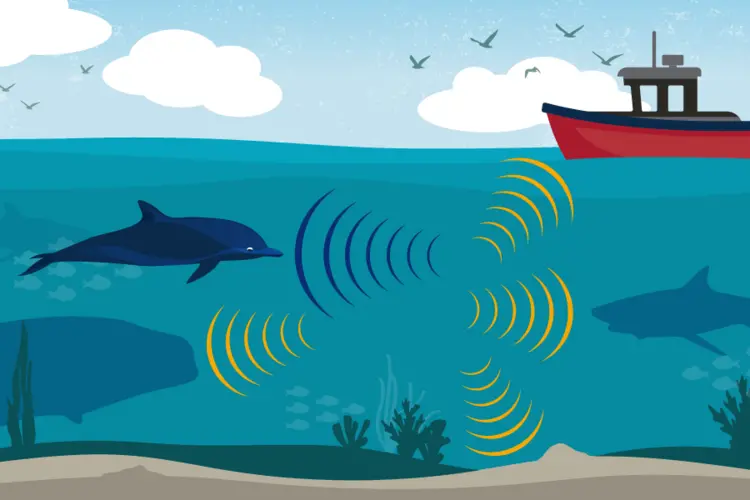
Laurie Heller Is Changing How We Understand, and Potentially Treat, Misophonia
Media Inquiries
Throughout her career, Laurie Heller(opens in new window) has listened closely — not just to words, but to sound itself. In the Auditory Lab(opens in new window) at Carnegie Mellon University, the psychology professor explores how the brain interprets everything from environmental clatter to the subtle noises that can spark deep feelings of safety, connection, or in some cases, rage.
So when Yuqi “Monica” Qiu, then an undergraduate in computer science, emailed Heller after seeing a recruitment poster for a study, Heller was ready to listen.
“I have misophonia,” Qiu wrote. “And I want to help.”
That message resonated. Their collaboration, which built on years of Heller’s work, would yield a groundbreaking study(opens in new window) on misophonia, a condition where everyday sounds, like chewing or pen clicking, trigger intense negative emotional reactions. The team used a technique called pupillometry, which measures pupil size as a marker for emotional and cognitive responses. It allowed them to see how people with misophonia physically responded to unpleasant sounds.
What they found supported previous research that indicated that people with misophonia don't just say they experience stronger emotional reactions to certain sounds — their bodies reveal it, too. In the paper, the researchers found that emotional and physiological responses to sounds can change when those sounds are reinterpreted in a new context. This could help pave the way for diagnostic tools and noninvasive treatment strategies.
“It’s rare for an undergraduate to be first author on a paper, but Monica earned it,” Heller said. “She brought lived experience, technical talent and unwavering curiosity. And she stuck with the project all through her undergrad.”
There’s more to sound than meets the eye (or ear)
Heller estimates that at least 5% of young adults in the United States experience misophonia. They don’t just dislike sounds like chewing or pen clicking. Sounds can trigger real emotional or even physical discomfort, interfering with work, relationships and daily life.
Despite its impact, misophonia is not yet listed in the Diagnostic and Statistical Manual of Mental Disorders (DSM), the widely used reference for diagnosing mental health conditions. Heller thinks it should be.
“If a condition is recognized in the DSM, it opens the door to health care, therapy and accommodations — all the things people need to manage it,” Heller said. “With misophonia, everyone knows it’s real, but because it’s not formally recognized yet, it puts people in a really tough spot.”
But to advocate for that kind of recognition, researchers first need a deeper understanding of what’s going on in the brain.
Movie magic
Heller and her team tested whether visual reframing could help people with misophonia. They created videos that paired unpleasant sounds like crunching food or cracking knuckles with carefully selected visuals, such as someone shaking a plastic bottle full of beads. Participants watched the videos and rated how disgusting they found the sounds.
The results showed that many participants rated the same sounds as significantly less unpleasant when they were visually reframed.
“It wasn’t about the acoustics. It was about what they thought caused the sound,” Heller said.
This simple shift in perception suggests a promising new direction for noninvasive therapies that retrain the brain to respond differently to misophonic triggers, Heller said.
Listening deeper
For Heller, understanding how we process sound, whether it's a warning, a comfort or a source of distress, isn’t just about fixing hearing. It’s about recognizing the emotional architecture of everyday life.
“I’m a basic researcher. I’m not designing the next hearing aid myself,” Heller said. “But what I am trying to do is understand why some sounds are harder to recognize than others, and what that tells us about hearing loss. If we can identify the causal properties of sound and how they get distorted, that gives hearing technology developers something to work with. My goal is to connect the dots between acoustics and perception, so others can build tools that help people.”
In Part 1 of a two-part episode, this CMU podcast explores the Science of Sound and its profound impact on our lives. Host Randy Scott speaks with Heller about how brains process sound, the dangers of noise pollution and the importance of protecting our hearing.
Decoding the language of noise
To understand how we interpret everyday sounds, Heller has studied the acoustic properties of common noises — for example, how people tell the difference between a door slamming and a book hitting the floor. Even for people with typical hearing, accurate recognition relies on more than just hearing the sound. It depends on subtle cues like frequency, rhythm and duration as well as information from other senses and memory.
She also investigates which sounds are more likely to be misidentified. Overlapping frequencies or abrupt onsets can confuse listeners. Some sounds are mistaken for others simply because of how the brain organizes and categorizes what it hears.
By identifying where perception breaks down, Heller hopes to uncover deeper insights into how people understand their auditory environment — and use that knowledge to design hearing technologies that better reflect how we truly listen.





